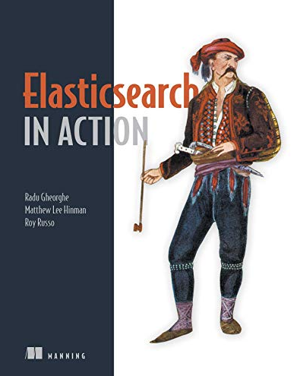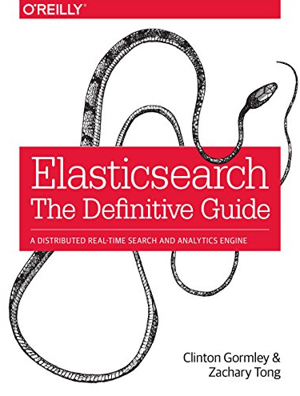This content originally appeared on Level Up Coding - Medium and was authored by Anto Semeraro

Back-End Development
ElasticSearch in .NET: A Guide to Building Fast and Scalable Search Experiences
Master the art of integrating ElasticSearch with .NET to craft high-performance, scalable, and user-friendly search experiences that elevate your applications to the next level of usability and functionality
Introduction to ElasticSearch and .NET

A Brief Overview of ElasticSearch
As a software developer, I’m always on the lookout for tools that make my life easier and help me deliver high-quality applications. One such tool that has changed the game for search functionality is ElasticSearch.
ElasticSearch is a powerful, open-source search and analytics engine that allows you to store, search, and analyze large volumes of data quickly and in near real-time. Built on top of Apache Lucene, ElasticSearch provides a robust, distributed, and scalable solution for searching and indexing data, making it an ideal choice for developers looking to implement search experiences in their applications.

The Importance of Search Experiences in Modern Applications
In today’s fast-paced digital landscape, users expect instant access to relevant information, and seamless search experiences have become a crucial component of modern applications.
A well-designed search experience not only improves user satisfaction but also helps developers unlock valuable insights from their data. This is where ElasticSearch shines, enabling developers to create rich search experiences that cater to their users’ needs.
ElasticSearch’s Synergy with .NET Ecosystem
The .NET ecosystem is a versatile and powerful platform for developing applications, and ElasticSearch’s compatibility with .NET makes it even more compelling. By leveraging the synergy between ElasticSearch and .NET, developers can build highly performant, scalable, and feature-rich search experiences with ease.
As we move forward, we’ll dive into the practical aspects of integrating ElasticSearch with .NET and optimizing it for robust search experiences. So, let’s get started!
Getting Started with ElasticSearch in .NET
Now that we’ve covered the basics of ElasticSearch and its importance in modern applications, it’s time to dive into the practical aspects of integrating it with .NET.

In this section, we’ll walk through the process of installing ElasticSearch, setting up your .NET environment, and connecting to an ElasticSearch instance using NEST, the official ElasticSearch .NET client.
Installing ElasticSearch and Setting up Your .NET Environment
Before we can start working with ElasticSearch in .NET, we need to install it. Follow the official ElasticSearch installation guide to set it up on your development machine. Once installed, verify that ElasticSearch is running by navigating to http://localhost:9200 in your web browser or using a tool like Postman to send a request to the same URL.
Next, create a new .NET project or open an existing one where you want to integrate ElasticSearch. To add the necessary dependencies, install the NEST and Elasticsearch.Net NuGet packages using the following commands in your terminal or package manager console:
dotnet add package NEST
dotnet add package Elasticsearch.Net
NEST is the official high-level .NET client for ElasticSearch, providing a strongly typed query DSL and mapping .NET objects to ElasticSearch documents. With NEST, you can easily perform CRUD operations, query data, and manage indices in a .NET-friendly way.
Configuring NEST and Connecting to an ElasticSearch Instance
To connect your .NET application to an ElasticSearch instance, you’ll need to create an instance of the ElasticClient class and configure it with the appropriate connection settings. Here's an example of how to create an ElasticClient instance:
using Elasticsearch.Net;
using Nest;
var settings = new ConnectionSettings(new Uri("http://localhost:9200"))
.DefaultIndex("default_index_name");
var client = new ElasticClient(settings);
In this code snippet, we create a new ConnectionSettings object, passing in the ElasticSearch instance URL (in this case, running locally at http://localhost:9200). We also set a default index name, which is optional but can be helpful when working with a single index. Finally, we instantiate the ElasticClient with the configured connection settings.
Now that we have our ElasticSearch instance up and running, our .NET environment configured, and a connection established using NEST, we’re ready to dive deeper into the world of ElasticSearch. In the next section, we’ll explore indices and mapping data in ElasticSearch using .NET objects.
Indexing and Mapping Data in ElasticSearch

Understanding Indices and Types in ElasticSearch
Before diving into the world of indexing and mapping data, let’s first grasp the basic concepts of indices and types in ElasticSearch. An index is a collection of documents that have similar characteristics, akin to a table in a relational database. Each document in an index is a set of key-value pairs representing data, similar to a row in a table.
Types, on the other hand, are deprecated since ElasticSearch 6.x and removed entirely in 8.x. Instead, each index now represents a single type, simplifying the overall structure.
Creating and Configuring Indices in .NET
Creating an index in ElasticSearch is a breeze using NEST, the official .NET client. Begin by defining an index name and specifying its settings, including the number of shards and replicas. Here’s a sample code snippet to create an index:
var createIndexResponse = await client.Indices.CreateAsync("my_index", c => c
.Settings(s => s
.NumberOfShards(3)
.NumberOfReplicas(2)
)
);This code creates an index named “my_index” with three shards and two replicas to ensure high availability and fault tolerance. You can also include custom analyzers, tokenizers, and other settings in the index configuration.
Mapping .NET Objects to ElasticSearch Documents
Mapping is the process of defining how your .NET objects correspond to ElasticSearch documents. NEST makes it easy to map your .NET classes to ElasticSearch fields, allowing you to leverage ElasticSearch’s powerful search capabilities.
To map a .NET class, simply create a Property mapping for each field you want to index:
public class Product
{
public int Id { get; set; }
public string Name { get; set; }
public string Description { get; set; }
public decimal Price { get; set; }
public string Category { get; set; }
}
var createIndexResponse = await client.Indices.CreateAsync("products", c => c
.Map<Product>(m => m
.AutoMap()
)
);
In this example, we have a Product class with several properties. Using .AutoMap(), NEST automatically generates a mapping based on the property types in the .NET class. You can also configure mappings explicitly for finer control over the indexing process, such as customizing field analyzers, index options, and more.
Understanding Indices and Types
Indexing and mapping data in ElasticSearch are the building blocks for creating powerful search experiences. Understanding the concepts of indices and types, along with creating and configuring indices in .NET, enables you to map your .NET objects to ElasticSearch documents efficiently.
Now that you’re familiar with indexing and mapping, let’s move on to querying and filtering data in ElasticSearch.

By the way, I wanted to let you know that if you buy a book using the links in this post, I’ll earn a small commission at no extra cost to you. It’s a win-win situation — you get a fantastic book, and I get to keep creating content you enjoy. Thank you for supporting my work!
Querying and Filtering Data

Building Simple and Complex Queries with NEST
Now that you have indexed and mapped your data in ElasticSearch, it’s time to explore the querying capabilities. NEST offers a fluent API to build both simple and complex queries, allowing you to harness the full potential of ElasticSearch.
For a simple query, use the Search method to perform a match query on a single field:
var searchResponse = await client.SearchAsync<Product>(s => s
.Query(q => q
.Match(m => m
.Field(f => f.Name)
.Query("sample product")
)
)
);
For more complex queries, combine multiple query types using boolean operators such as must, should, and must_not. This example demonstrates a bool query that combines a match query and a range query:
var searchResponse = await client.SearchAsync<Product>(s => s
.Query(q => q
.Bool(b => b
.Must(mu => mu
.Match(m => m
.Field(f => f.Name)
.Query("sample product")
),
mu => mu
.Range(r => r
.Field(f => f.Price)
.GreaterThanOrEquals(10)
.LessThanOrEquals(100)
)
)
)
)
);
Filtering and Sorting Results
Filtering and sorting are essential aspects of any search experience. To filter results, use the post_filter clause in your search query:
var searchResponse = await client.SearchAsync<Product>(s => s
.Query(q => q
.MatchAll()
)
.PostFilter(pf => pf
.Term(t => t.Category, "electronics")
)
);
To sort the search results, simply add the Sort method to your query:
var searchResponse = await client.SearchAsync<Product>(s => s
.Query(q => q
.MatchAll()
)
.Sort(so => so
.Field(f => f
.Field(fd => fd.Price)
.Order(SortOrder.Ascending)
)
)
);
Pagination and Limiting Results
Implementing pagination and limiting results is straightforward with NEST. Use the From and Size methods to paginate the search results:
var searchResponse = await client.SearchAsync<Product>(s => s
.Query(q => q
.MatchAll()
)
.From(10)
.Size(20)
);
This code retrieves 20 results starting from the 11th result. Adjust the values of From and Size to paginate through the entire result set.
Conclusion
Querying and filtering data in ElasticSearch empowers you to create robust and advanced search experiences. Leveraging NEST’s fluent API to build simple and complex queries, filtering and sorting results, and implementing pagination makes it easier than ever to deliver powerful search functionality in your .NET applications.
With these skills in hand, let’s move on to enhancing search experiences with autocomplete, suggestions, and more.
Enhancing Search Experiences

Autocomplete and Suggestions with ElasticSearch
One of the most compelling features of ElasticSearch is its ability to provide autocomplete and suggestions. This functionality significantly improves user experience by guiding users to relevant search results as they type.
To implement autocomplete, use the completion suggester in ElasticSearch. First, create a mapping for the suggest field:
var createIndexResponse = await client.Indices.CreateAsync("products", c => c
.Map<Product>(m => m
.AutoMap()
.Properties(p => p
.Completion(c => c
.Name(n => n.Suggest)
.Analyzer("simple")
)
)
)
);Next, index the suggest field with your data:
var product = new Product
{
Id = 1,
Name = "Sample Product",
Suggest = new CompletionField
{
Input = new[] { "Sample", "Product" },
Weight = 1
}
};
var indexResponse = await client.IndexAsync(product, i => i.Index("products"));
Finally, use the Suggest method to perform a completion suggestion query:
var suggestResponse = await client.SearchAsync<Product>(s => s
.Suggest(su => su
.Completion("product-suggest", c => c
.Field(f => f.Suggest)
.Prefix("sam")
.Fuzzy(f => f
.Fuzziness(Fuzziness.Auto)
)
.Size(10)
)
)
);
Boosting and Relevancy Tuning
Boosting and relevancy tuning are essential for delivering relevant search results. To boost the importance of specific fields during the search, use the boost parameter in your queries:
var searchResponse = await client.SearchAsync<Product>(s => s
.Query(q => q
.MultiMatch(m => m
.Fields(f => f
.Field(fd => fd.Name, boost: 2)
.Field(fd => fd.Description)
)
.Query("sample product")
)
)
);
In this example, we’ve boosted the Name field, giving it more weight when calculating the search score.
Handling Synonyms and Misspellings
ElasticSearch can handle synonyms and misspellings to improve search accuracy. To account for synonyms, use the synonym token filter in your custom analyzer:
var createIndexResponse = await client.Indices.CreateAsync("products", c => c
.Settings(s => s
.Analysis(a => a
.TokenFilters(t => t
.Synonym("synonym_filter", sf => sf
.Synonyms("laptop, notebook")
)
)
)
)
);To handle misspellings, use the fuzzy query or enable the fuzziness option in the match query:
var searchResponse = await client.SearchAsync<Product>(s => s
.Query(q => q
.Match(m => m
.Field(f => f.Name)
.Query("smaple product")
.Fuzziness(Fuzziness.Auto)
)
)
);
Leveraging ElasticSearch capabilities
Incorporating advanced search features like autocomplete, suggestions, boosting, relevancy tuning, and handling synonyms and misspellings significantly elevates the user experience in your .NET applications. By leveraging ElasticSearch’s powerful capabilities in these areas, you can create intuitive and intelligent search experiences that cater to your users’ needs.
Now, let’s move on to scaling ElasticSearch in .NET applications to ensure optimal performance and reliability.
Scaling ElasticSearch in .NET Applications

Clustering and Sharding Strategies
As your application grows, you’ll need to scale your ElasticSearch deployment to handle more data and users. Clustering is a fundamental aspect of scaling ElasticSearch.
Through distributing data across multiple nodes in a cluster, you can enhance performance, availability, and fault tolerance. Sharding refers to splitting an index into smaller, more manageable pieces called shards, which can be spread across multiple nodes.
ElasticSearch automatically handles sharding and replication, but you can also customize these settings to meet your application’s specific requirements.
Monitoring and Maintaining Performance
Monitoring your ElasticSearch cluster is crucial for maintaining optimal performance and detecting potential issues early. ElasticSearch provides several monitoring tools, such as ElasticSearch Monitoring, which is part of the Elastic Stack.
With these tools, you can keep an eye on important metrics like cluster health, node and shard status, and query performance. Additionally, staying up-to-date with ElasticSearch best practices and optimizing your application’s search and indexing operations will help ensure your system remains efficient and responsive.
Effective Clustering Implementation
Scaling your ElasticSearch deployment in .NET applications is essential for meeting the growing demands of your user base. With the implementation of effective clustering, sharding strategies, and monitoring performance, you can ensure a robust and efficient search experience for your users.

Conclusion and Further Resources

Recap of Key Points and Takeaways
Throughout this article, we’ve explored the ins and outs of integrating ElasticSearch with .NET applications to build powerful and efficient search experiences. We’ve covered the basics, such as setting up ElasticSearch and using NEST, to more advanced topics like query building, filtering, enhancing search experiences, and scaling strategies.
In summary, ElasticSearch is an incredibly powerful tool for creating rich search experiences in modern applications. With its synergy with the .NET ecosystem, you can build fast, relevant, and scalable search solutions that cater to your users’ needs.
Recommended Resources for Deepening Knowledge
As you continue your journey with ElasticSearch and .NET, here are some recommended resources to help you deepen your understanding and hone your skills:
- ElasticSearch’s Official Documentation: A comprehensive guide to ElasticSearch’s features, concepts, and best practices.
- NEST Documentation: The official ElasticSearch .NET client’s documentation, detailing how to use NEST effectively in your projects.
- ElasticSearch on .NET Rocks!: A podcast episode discussing ElasticSearch in the .NET ecosystem and providing insights from industry experts.
Thank you for joining me on this journey through ElasticSearch and .NET. With the knowledge and resources shared in this article, you’re well on your way to becoming an ElasticSearch pro and creating outstanding search experiences in your applications. Good luck and happy searching!
And don’t forget to follow me for more juicy content like this! 😎🚀 #Medium #FollowMe
Bibliography

- “Elasticsearch in Action”, Radu Gheorghe, Matthew Lee Hinman, Roy Russo, 2015, Manning
- “Elasticsearch: The Definitive Guide: A Distributed Real-Time Search and Analytics Engine”, Clinton Gormley, Zachary Tong, 2015, O’Reilly Media
- “Elasticsearch 8.x Cookbook: Over 180 recipes to perform fast, scalable, and reliable searches for your enterprise, 5th Edition”, Alberto Paro, 2022, Packt Publishing
- “Learning Elasticsearch 7.x: Index, Analyze, Search and Aggregate Your Data Using Elasticsearch”, Anurag Srivastava, 2020
Level Up Coding
Thanks for being a part of our community! Before you go:
- 👏 Clap for the story and follow the author 👉
- 📰 View more content in the Level Up Coding publication
- 💰 Free coding interview course ⇒ View Course
- 🔔 Follow us: Twitter | LinkedIn | Newsletter
🚀👉 Join the Level Up talent collective and find an amazing job
ElasticSearch in .NET: A Guide to Building Fast and Scalable Search Experiences was originally published in Level Up Coding on Medium, where people are continuing the conversation by highlighting and responding to this story.
This content originally appeared on Level Up Coding - Medium and was authored by Anto Semeraro
Anto Semeraro | Sciencx (2023-05-07T21:30:45+00:00) ElasticSearch in .NET: A Guide to Building Fast and Scalable Search Experiences. Retrieved from https://www.scien.cx/2023/05/07/elasticsearch-in-net-a-guide-to-building-fast-and-scalable-search-experiences/
Please log in to upload a file.
There are no updates yet.
Click the Upload button above to add an update.
